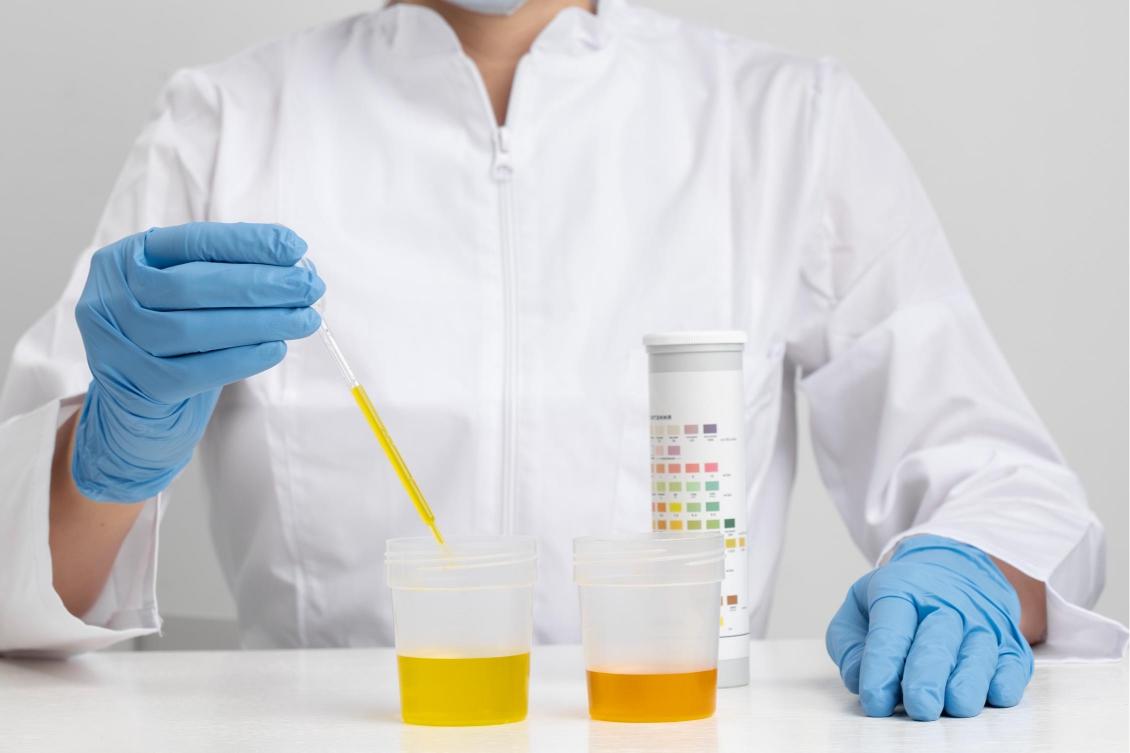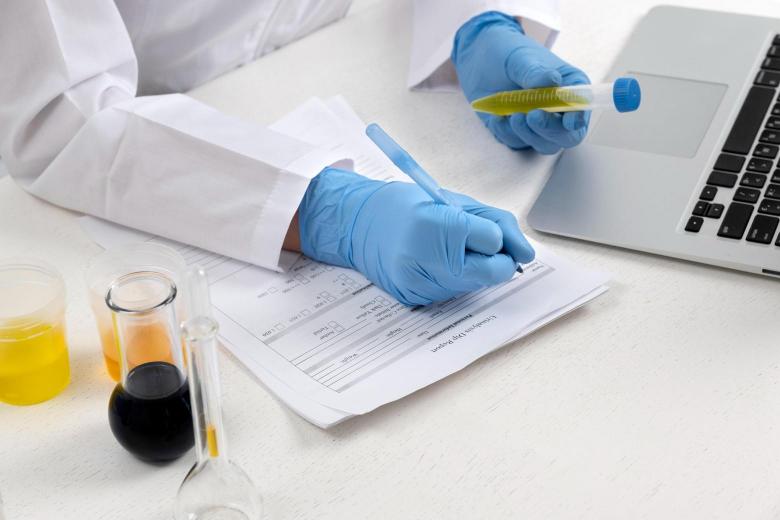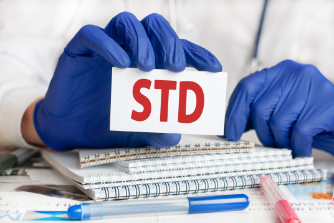Subtotal $0.00
Sexually transmitted diseases (STDs) and sexually transmitted infections (STIs) are significant public health issues. Regular std testing plays a crucial role in maintaining your sexual health and preventing the spread of infections. At National Diagnostics Lab, we’re committed to providing the information you need to make informed decisions. This guide will walk you through the various types of STD/STI tests, how they work, and why they’re essential for early detection and treatment.
Overview of STD/STI Testing
STD/STI testing at the National Diagnostics Lab involves a variety of methods designed to identify infections transmitted through sexual contact. These tests can detect bacterial and viral infections, helping ensure you receive timely treatment and reducing the risk of spreading infections to others. Knowing the differences between these tests empowers you to make informed choices about your sexual health.
Importance of Regular Testing for Sexual Health
Regular testing is vital because many STDs and STIs may not show symptoms, meaning you could be infected without knowing it. Without testing, these infections can go untreated, potentially leading to serious health complications like infertility, chronic pain, or an increased risk of contracting or transmitting HIV. Routine testing at the National Diagnostics Lab helps detect infections early, allowing prompt treatment and reducing the spread of STDs/STIs.
What Are STDs and STIs?
Definition and Differences Between STDs and STIs
STDs and STIs are terms often used interchangeably, but there’s a subtle difference: Introduction to STI and STD Testing is crucial for understanding how these infections impact your health. Regular testing helps in early detection and effective treatment, ensuring that you stay informed and safe.
- STI (Sexually Transmitted Infection): Refers to the initial infection by a pathogen (bacteria, virus, or parasite) that may not have caused symptoms or developed into a disease.
- STD (Sexually Transmitted Disease): Refers to when an STI progresses into a disease, typically involving symptoms or complications.
While all STDs begin as STIs, not all STIs progress to the disease stage, especially if they are detected and treated early at the National Diagnostics Lab.
Common Types of STDs/STIs
Some of the most common STDs/STIs include:
- Chlamydia
- Gonorrhea
- Syphilis
- Human Papillomavirus (HPV)
- Herpes Simplex Virus (HSV)
- HIV/AIDS
- Trichomoniasis
- Hepatitis B and C
Each infection requires specific tests for accurate diagnosis and treatment, all available at the National Diagnostics Lab.
Why Testing is Crucial for Sexual Health
The Role of Early Detection
Early detection of STDs/STIs through testing is essential for effective treatment. Many infections can be treated and cured if caught early. For instance, bacterial infections like chlamydia and gonorrhea can be treated with antibiotics, preventing complications such as infertility and chronic pain.
Impact of Untreated STDs/STIs on Health
Untreated STDs/STIs can lead to severe health problems, including:
- Pelvic Inflammatory Disease (PID): A complication of untreated chlamydia or gonorrhea that can cause infertility.
- Chronic pain, Particularly in the pelvic region, can result from untreated infections.
- Increased risk of HIV: Individuals with untreated STDs/STIs are more susceptible to contracting HIV due to compromised immune systems.
Myths and Misconceptions About STD/STI Testing
There are several misconceptions about STD/STI testing that might prevent you from seeking the care you need. Let’s debunk a few:
- Myth 1: You don’t need to be tested if you don’t have symptoms.
- Myth 2: You only need to get tested if you have multiple partners.
- Myth 3: At-home tests are unreliable.
Understanding the importance of testing, even without symptoms, and knowing the reliability of modern testing methods at National Diagnostics Lab can encourage you to take charge of your sexual health.
Types of STD/STI Tests
Blood Tests
Blood tests are used to detect infections that circulate in the bloodstream. At National Diagnostics Lab, we use blood tests to diagnose:
- HIV
- Syphilis
- Hepatitis B and C
- Herpes Simplex Virus (HSV)
These tests are performed in our clinic or through our convenient at-home testing kits. They typically involve drawing a small blood sample from your arm or a finger prick.
Urine Tests
Urine tests are commonly used to detect bacterial infections such as:
- Chlamydia
- Gonorrhea
These tests are simple, non-invasive, and require only a small urine sample. They are often recommended for routine screening, especially for sexually active individuals.
Swab Tests
Swab tests involve taking a sample from the affected area, such as the genital region, throat, or rectum, depending on the suspected infection. Swab tests at the National Diagnostics Lab are used to diagnose:
- HPV (Human Papillomavirus)
- Herpes Simplex Virus (HSV)
- Trichomoniasis
Depending on the location of the suspected infection, we use different types of swabs, such as genital, throat, and rectal.
Rapid Tests vs. Laboratory Tests

Rapid Tests
Rapid tests provide results within minutes and are often used for HIV and syphilis. While they are convenient, they may be less accurate than laboratory tests.
Laboratory Tests
Laboratory tests at the National Diagnostics Lab are more comprehensive and accurate. However, they typically take a few days to provide results. These are considered the gold standard for confirming infections.
Understanding Blood Tests for STDs/STIs
How Blood Tests Work
Blood tests at the National Diagnostics Lab detect antibodies or antigens related to specific infections. For example:
- HIV: Blood tests detect HIV antibodies or the virus (HIV RNA).
- Syphilis: Tests detect antibodies produced in response to the infection.
- Herpes: Blood tests can identify antibodies for HSV-1 and HSV-2.
These tests are essential for diagnosing infections that do not always present visible symptoms.
Common STDs/STIs Detected by Blood Tests
Blood tests are particularly effective for detecting:
- HIV
- Syphilis
- Hepatitis B and C
- Herpes Simplex Virus (HSV)
When Blood Tests are Recommended
Blood tests are recommended when:
- You have had potential exposure to blood-borne STDs/STIs.
- You have symptoms suggestive of infections like HIV or syphilis.
- You are undergoing routine STD/STI screening, particularly if you are in a high-risk group.
Understanding Urine Tests for STDs/STIs

How Urine Tests Work
Urine tests detect bacterial infections by identifying the DNA or RNA of the bacteria responsible. For instance, chlamydia and gonorrhea are detected by finding bacterial DNA in the urine sample.
Common STDs/STIs Detected by Urine Tests
Urine tests are commonly used to detect:
- Chlamydia
- Gonorrhea
These quick and non-invasive tests make them popular for routine screening at the National Diagnostics Lab.
Advantages and Limitations of Urine Tests
- Advantages: Non-invasive, easy to administer, and widely available.
- Limitations: It may not detect infections in the throat or rectum, so swab tests are required for comprehensive screening.
Understanding Swab Tests for STDs/STIs
How Swab Tests Work
Swab tests involve taking a sample from the potentially infected area. At National Diagnostics Lab:
- Genital Swabs are used for HPV and herpes testing.
- Throat Swabs detect gonorrhea or chlamydia in the throat.
- Rectal Swabs are used for STDs/STIs like gonorrhea and chlamydia in the rectum.
Common STDs/STIs Detected by Swab Tests
Swab tests are effective for diagnosing:
- HPV (Human Papillomavirus)
- Herpes Simplex Virus (HSV)
- Trichomoniasis
Different Types of Swabs
- Genital Swabs: For STDs/STIs affecting the genital area.
- Throat Swabs: For detecting infections in the throat, especially after oral sex.
- Rectal Swabs: For diagnosing infections in the rectal area, these are important for those engaging in anal sex.
Rapid STD/STI Tests vs. Laboratory Tests
Key Differences in Accuracy and Speed
- Rapid Tests Offer quick results (often within minutes) but may have a higher chance of false positives or negatives.
- Laboratory Tests: Generally more accurate, with results typically available within a few days. These tests are the gold standard for confirming infections at the National Diagnostics Lab.
When to Choose Rapid Tests
Rapid tests are useful when:
- You need immediate results, such as after potential exposure to HIV.
- Access to a lab is limited, and quick screening is required.
Benefits of Laboratory Confirmation
Laboratory confirmation is crucial for ensuring the accuracy of your test results, especially if a rapid test gives a positive result. Lab tests can confirm the presence of an infection with greater precision, guiding you to the appropriate treatment.
Interpreting STD/STI Test Results
What Positive, Negative, and Inconclusive Results Mean
- Positive Result: Indicates the presence of an STD/STI, requiring follow-up with a healthcare provider for treatment.
- Negative Result: No infection was detected; however, it’s important to consider the timing of the test relative to exposure.
- Inconclusive Result: Results could be clearer, and retesting may be necessary.
Steps to Take After Receiving Your Results
If you test positive:
- Seek treatment: Prompt treatment can prevent complications and the spread of the infection.
- Inform partners: Notify sexual partners so they can get tested and treated if necessary.
- Follow-up: Attend any recommended follow-up appointments to ensure the infection is fully treated.
Discussing Results with a Healthcare Provider
Discussing your test results with a healthcare provider at National Diagnostics Lab is essential for understanding what the results mean and what steps to take next. Your provider can explain the implications of your results and guide you in managing your sexual health.
The Window Period: Timing of STD/STI Tests
Understanding the Window Period for Different STDs/STIs
The window period is the time between potential exposure to an STD/STI and when a test can accurately detect it. For example:
- HIV: Typically detected within 2-4 weeks after exposure.
- Chlamydia/Gonorrhea: Usually detectable within 1-2 weeks.
Understanding the window period is crucial to ensure accurate testing.
How Timing Affects Test Accuracy
Testing too soon after exposure may result in a false negative, as the infection may not have reached detectable levels. To ensure accuracy, it’s important to follow guidelines for the optimal timing of tests.
When to Retest After Potential Exposure
Retesting may be necessary if:
- You tested during the window period and received a negative result.
- You have ongoing exposure or engage in high-risk activities.
- You develop symptoms after a negative test.
False Positives and False Negatives in STD/STI Testing
Common Causes of False Results
False positives or negatives can occur due to:
- Testing too early or too late: Timing is crucial for accurate results.
- Improper sample collection: Particularly with at-home tests.
- Cross-reactivity: Where a test detects antibodies or antigens from a different, unrelated infection.
How to Confirm Results with Follow-up Testing
Suppose you receive a positive or inconclusive result. In that case, follow-up testing at the National Diagnostics Lab is recommended to confirm the diagnosis. Laboratory tests are particularly important for confirming rapid test results.
Reducing the Risk of Inaccurate Results
- Follow testing guidelines: Ensure correct timing and test type.
- Choose reputable testing sites, Whether using at-home kits or visiting our lab.
- Discuss retesting: If there’s any doubt about your results, discuss the need for retesting with your healthcare provider.
The Importance of Regular STD/STI Screening
Frequency of Testing Based on Risk Factors
- Sexually active individuals Should get tested at least once a year.
- High-risk groups (multiple partners, men who have sex with men, etc.): Every 3-6 months.
- Pregnant women: Screening during early pregnancy to prevent transmission to the baby.
Testing Guidelines for Different Age Groups and Sexual Activity Levels
- Teens and young adults: Frequent testing is recommended due to higher rates of STDs/STIs in this age group.
- Older adults: Testing should continue based on sexual activity and risk factors, as STDs/STIs can affect individuals of any age.
How Regular Testing Protects You and Your Partners
Regular testing helps detect infections early, preventing complications and reducing the risk of transmission. It’s a key component of responsible sexual health, protecting both your health and the health of your partners.
- Confidentiality and Privacy in STD/STI Testing
Ensuring Privacy in Testing
Most testing facilities, including clinics and at-home testing services, are required by law to protect your privacy. Your test results are confidential and can only be shared with you or individuals you authorize.
How Results Are Protected
Results are typically stored in secure databases and only accessible by authorized personnel. At-home test results are often delivered through secure online portals.
Options for Anonymous Testing
Anonymous testing options are available for those who prefer not to have their name associated with their test results. This can be an important consideration for individuals concerned about privacy.
- Where to Get Tested for STDs/STIs
Clinics and Healthcare Providers
- Primary Care Physicians: Can provide testing and follow-up care.
- Planned Parenthood and Sexual Health Clinics: Offer confidential and often low-cost testing.
- Urgent Care Clinics: Available for more immediate testing needs.
Conclusion
Understanding the differences between STD/STI tests is crucial for making informed decisions about your sexual health. Each type of test—whether blood, urine, or swab—serves a specific purpose and is essential for accurate diagnosis and treatment.
Regular testing is the cornerstone of maintaining sexual health. By staying informed about the different types of STD/STI tests and their importance, you can take proactive steps to protect yourself and your partners from the long-term consequences of untreated infections. This Comprehensive Guide to STD Testing will help you understand the available options and empower you to make informed decisions about your sexual health.
FAQ's
- Blood Tests – For infections like HIV, syphilis, and herpes.
- Urine Tests – For chlamydia and gonorrhea.
- Swab Tests – For HPV, herpes, and trichomoniasis.
STI testing detects infections before symptoms appear; STD testing is typically for infections that have progressed to symptomatic diseases.
No, testing varies by STD. For example, HIV is tested through blood, chlamydia through urine, and HPV through swabs.
HIV, chlamydia, gonorrhea, syphilis, hepatitis B and C, and HPV are key tests due to their prevalence and potential complications.
Consider your symptoms and sexual history, and consult a healthcare provider. Routine screening is also advised for common STDs.
It depends on the STD: blood tests for HIV, urine tests for chlamydia, and swabs for HPV are among the best for each.



